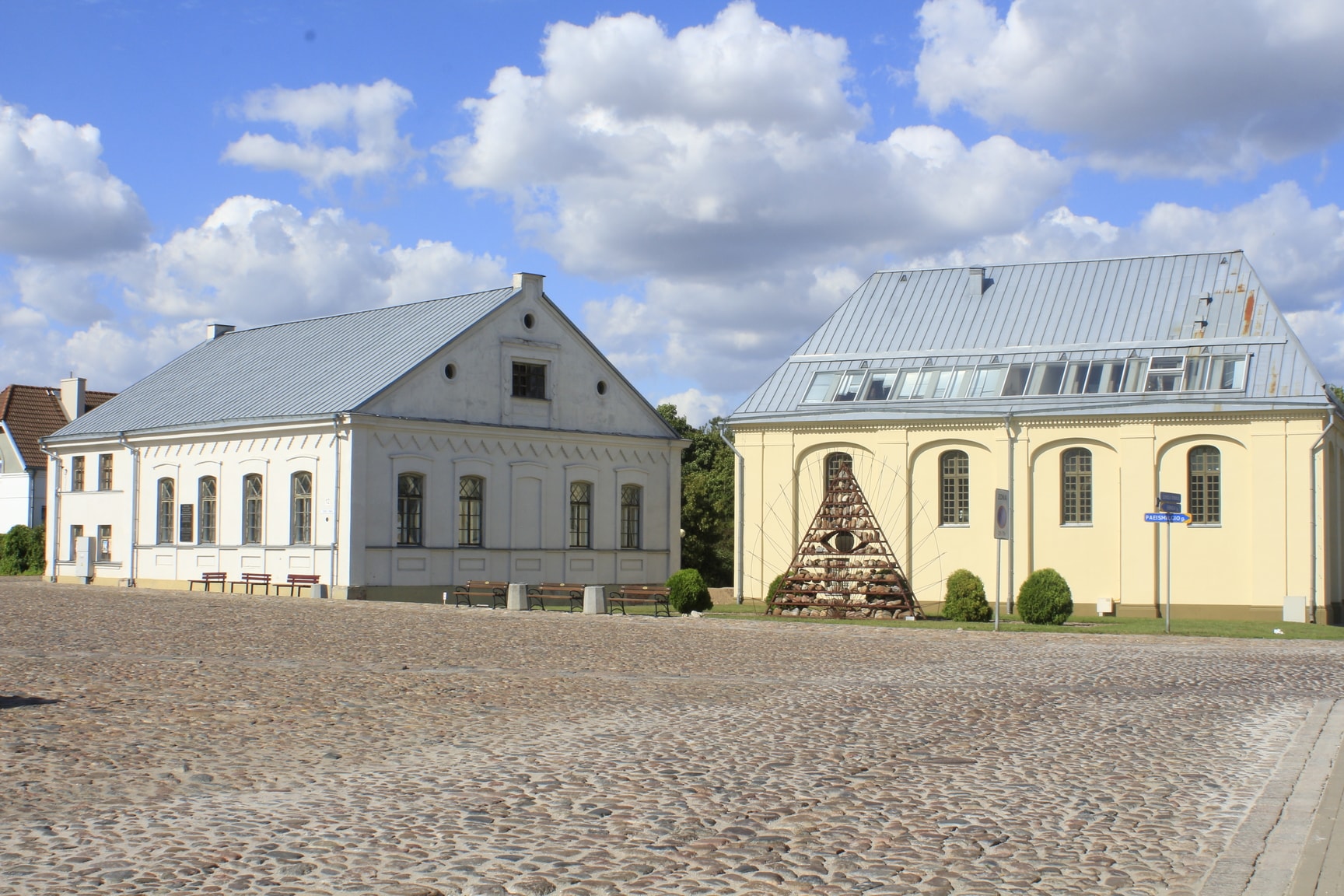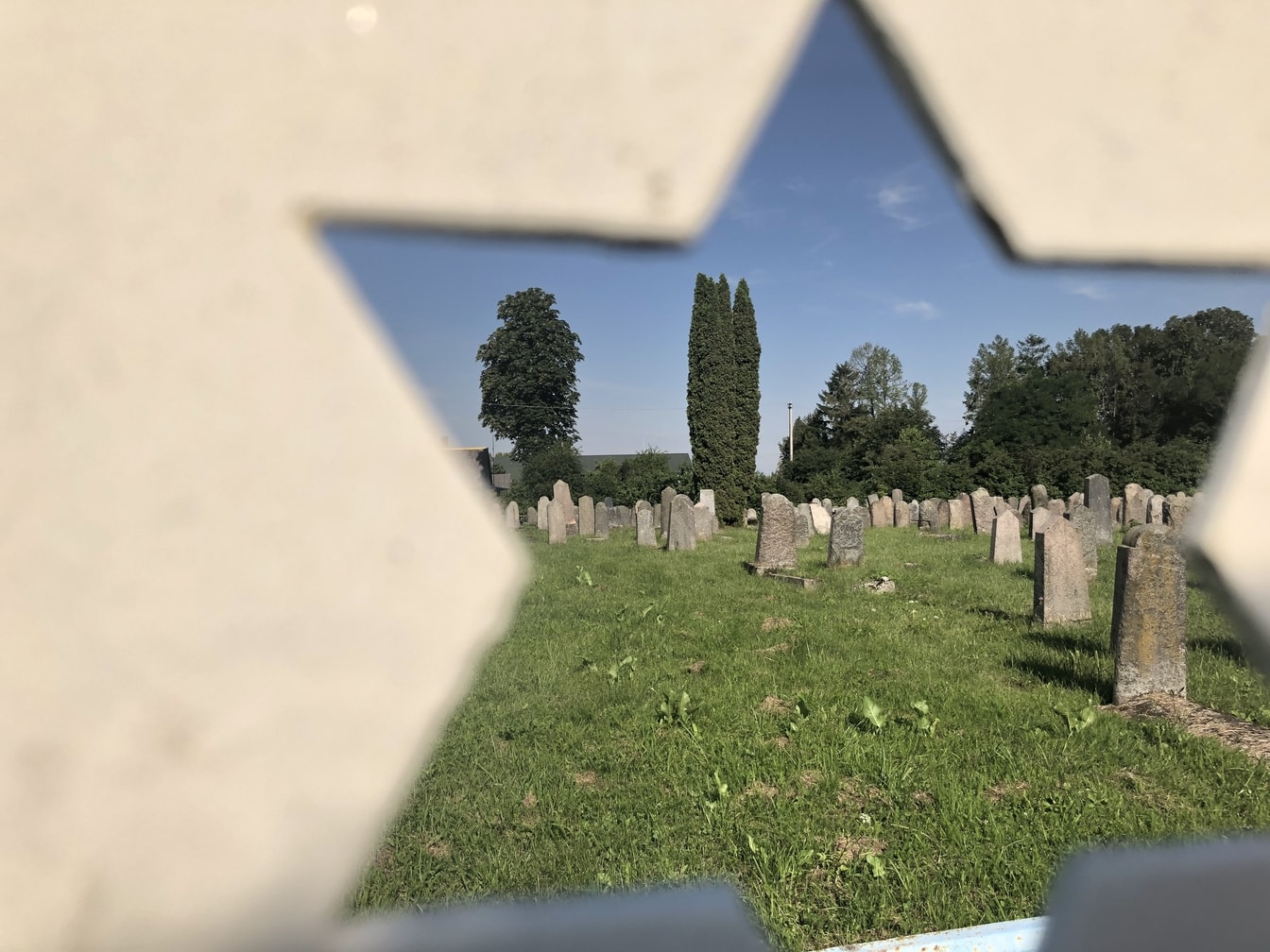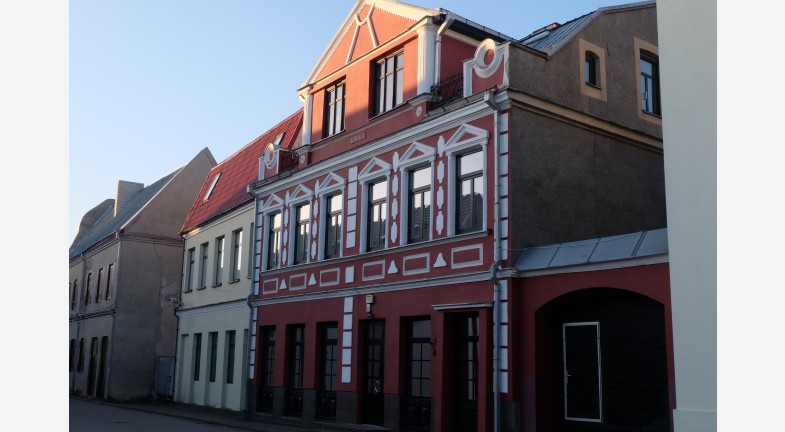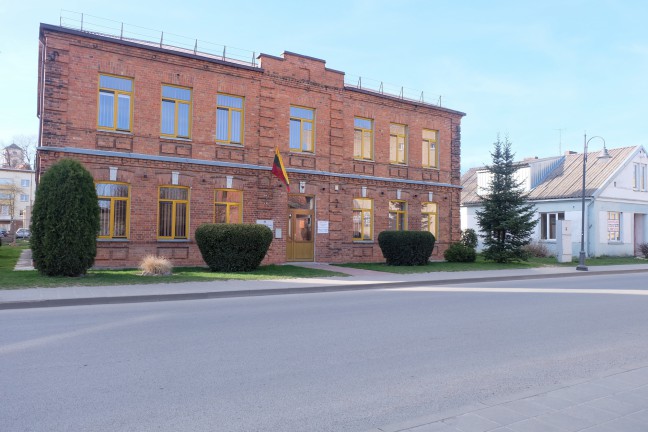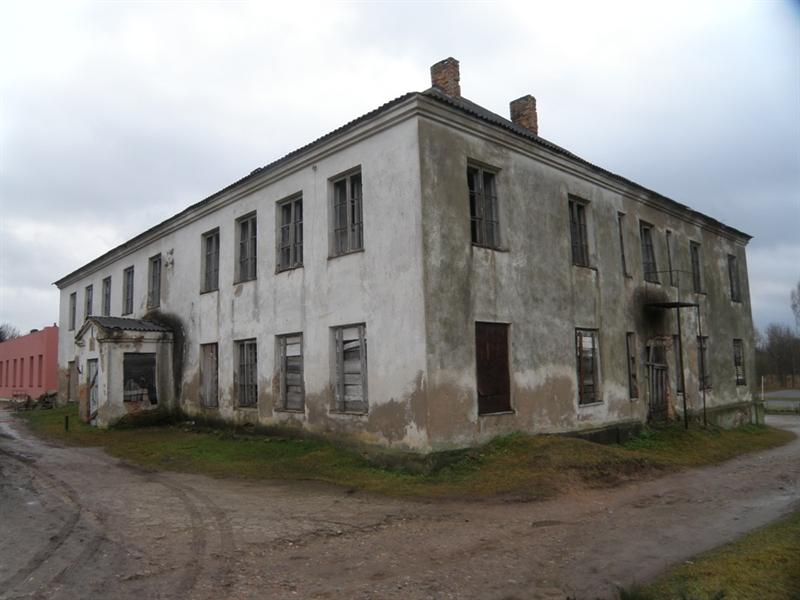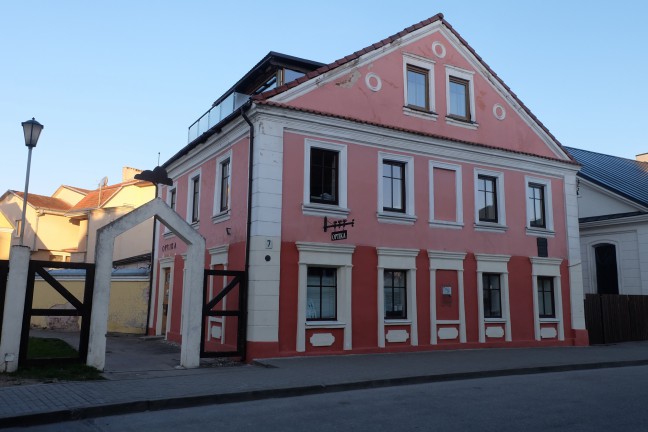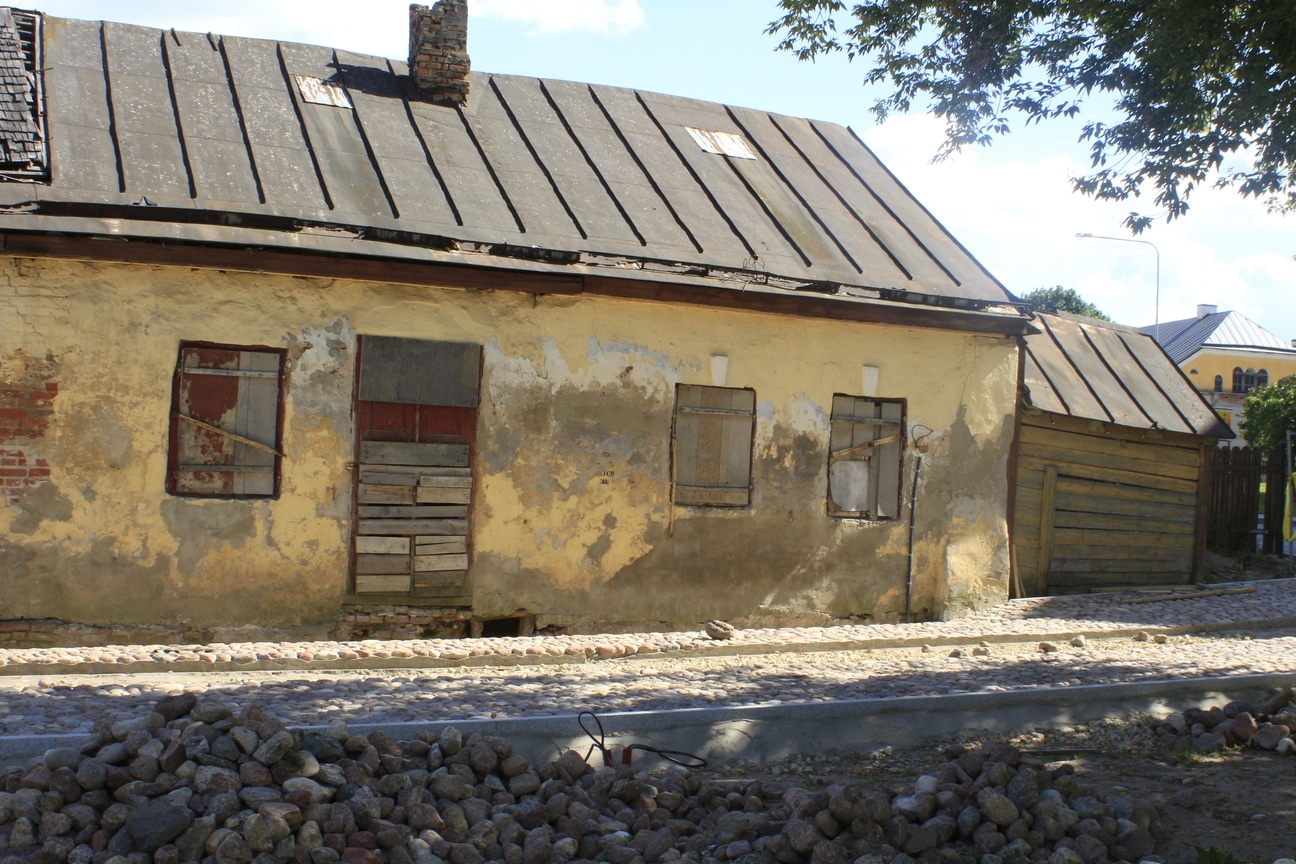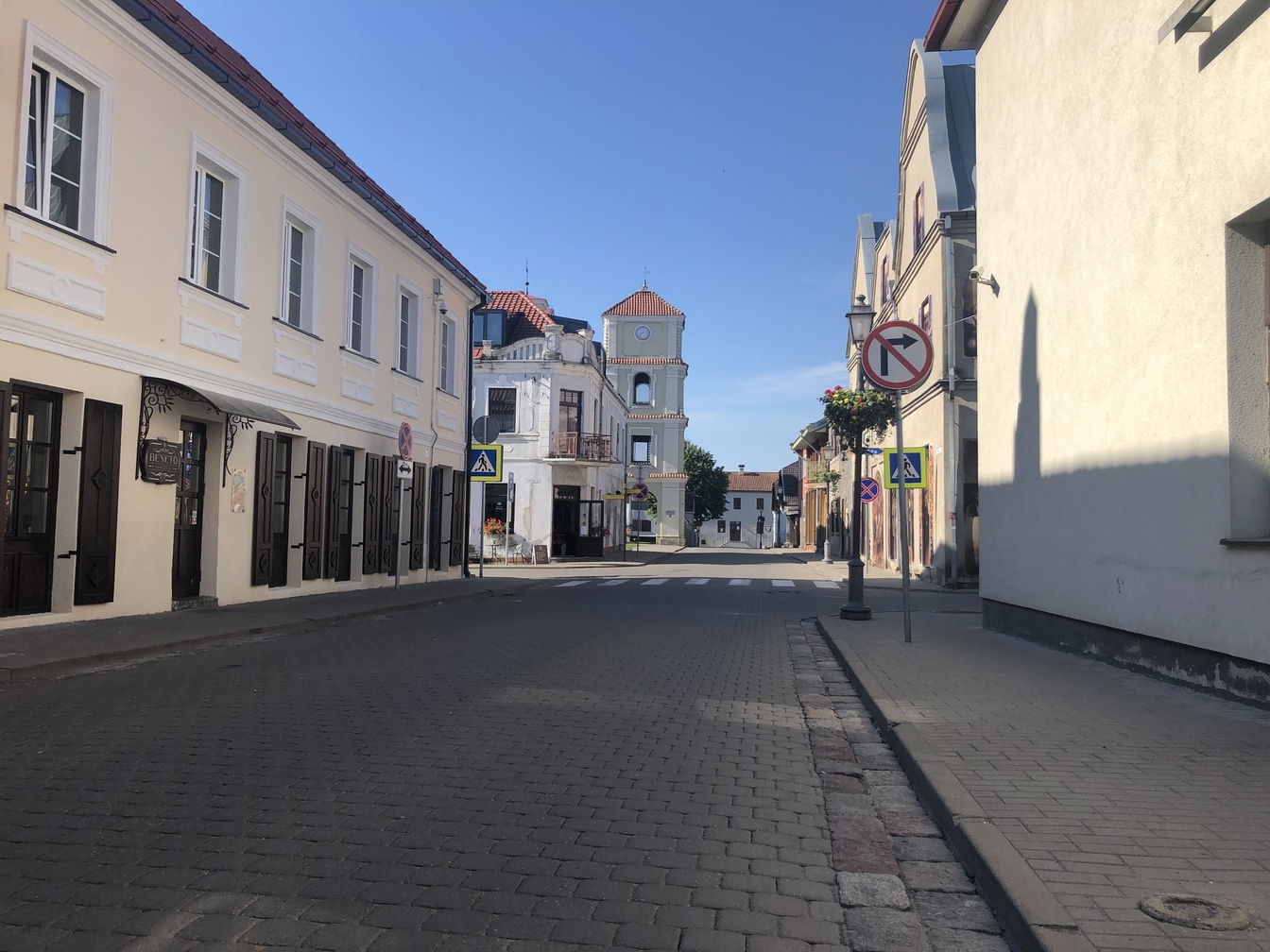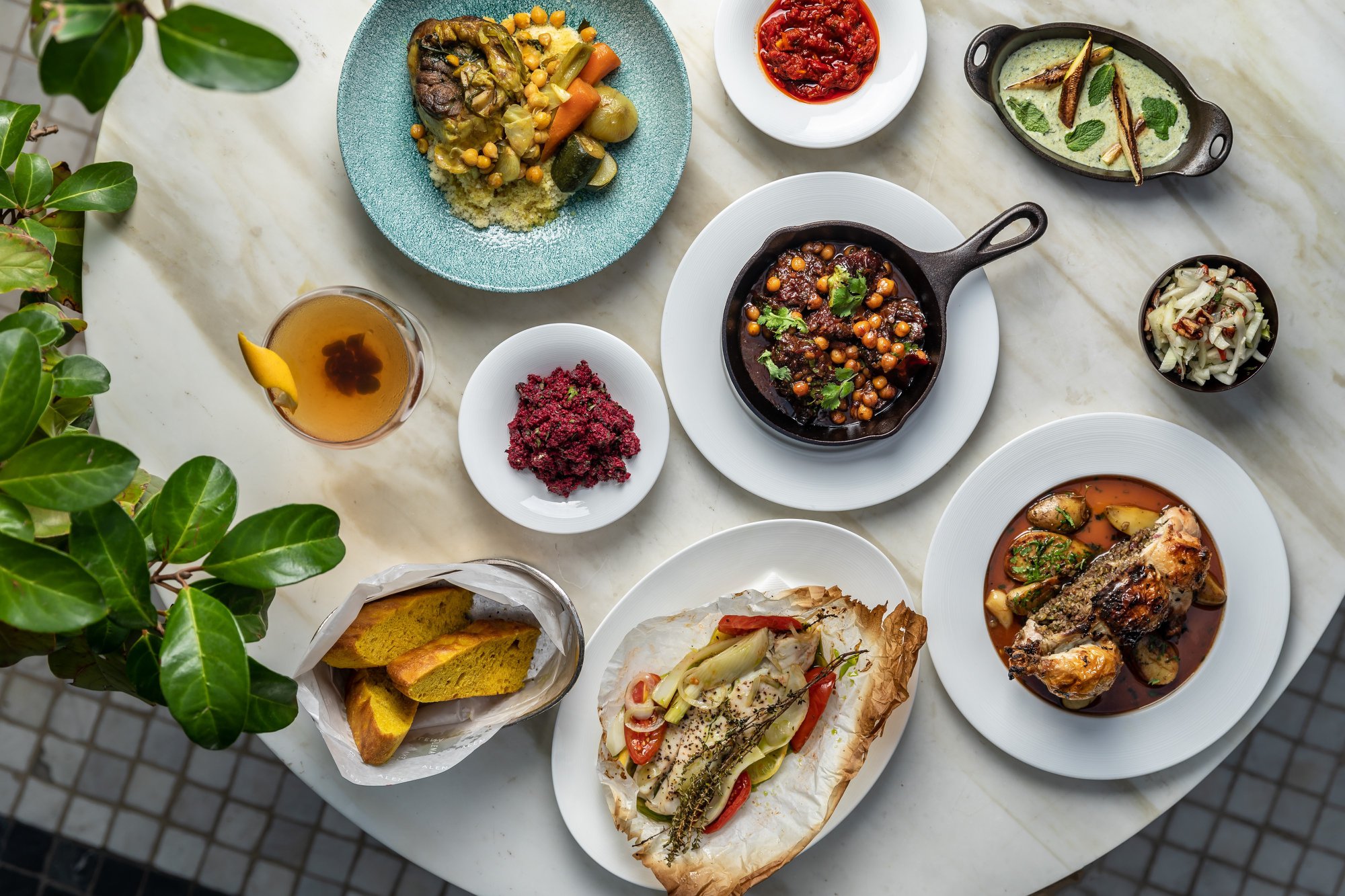Kėdainiai has a synagogue complex that consists of two synagogues: The Great Synagogue and the New Synagogue. The Great Synagogue was built in 1784, replacing a wooden synagogue that burned down during the fire. In the first half of the 19th century, the Jewish community continued to grow, and the need to build additional prayer houses arose. The New Synagogue was built in 1837. On its facade, you can see some features of historicist architecture. Before one hundred years, this place looked different as it was an epicenter of the Jewish community. The New Synagogue housed a custody place. Also, in front of the synagogue, a butcher’s house stood, which was connected to the synagogue by an arc. Since 2002 the building of the New Synagogue is used as a multicultural center, where people have an opportunity to get acquainted with the history of the Jewish community and attend various cultural events. While The Great Synagogue, during the Soviet times, experienced serious reconstructions, and the interior of the synagogue was redesigned. Now the synagogue houses an art school.
Archives: Directory listings
Directory listings
Kedainiai Old Jewish Cemetery
It is unknown when the surviving Jewish cemetery of Kėdainiai was established. The oldest inscription dates back to the 1860s, yet this cemetery may have been established even earlier. Currently, nearly 600 tombstones could be found in the territory of this cemetery.
Pharmacy of Wulf Polones
A three-story building on Didžioji Street belonged to a Jew Bavilak, who rebuilt it after a fire in 1908, adding to the facade elements of the eclectic architecture. The ground floor was adopted for a shop and the other ones were residential premises. After World War I, the building’s owner was a Jew Wulf Polones, who established there a pharmacy. After the murder of Kėdainiai Jews in 1941, the pharmacy was nationalized and operated until 1988.
Jews Children Orphanage
In Kėdainiai there was an actively involved Jewish association of charity, social support, and culture Ezro, which owned some buildings and hired them out for poor countrymen, repaired and funded public buildings. The association Ezro worked to set up an orphanage here in Kėdainiai. In 1930, 23 children (13 boys and 10 girls) lived in Kėdainiai Jewish children’s orphanage. The orphanage owned a two-story house with a garden in Josvainių Street. Living conditions in the orphanage were good. Rooms were large, children were provided with clothes and footwear. The material position of the orphanage was maintained by the mentioned Ezro association, that established the orphanage. The orphanage was financed by Ministry of the Interior and Kėdainiai municipality. It is known that pupils of the orphanage would arrange plays and shows.
Šėta Synagogue
The Jews in the Šėta settlement were mentioned for the first time in 1709. In 1766, they got the privilege to build a synagogue. A synagogue and Beit Midrash (a learning house) were destroyed during a fire in 1878. In 1893, architect Nikolay Andreyev developed a project of a new synagogue and Beit Midrash in one building. The building was damaged during World War I – a roof collapsed, a center of the western part was destroyed. During reconstruction in 1920, this part of the synagogue was divided into two buildings – two separate premises on the ground floor were allocated for women. During the interwar period, the synagogue housed a Jewish primary school and a bank. When the Nazis took over Šėta, the settlement’s residents Jews were driven into Kėdainiai ghetto and murdered together with Jews of Žeimiai and Kėdainiai in Daukšiai village on August 28, 1941. The building of the synagogue remained without a community, after layout change and connection of blocks of the western part was adapted for Šėta Secondary School.
Kedainiai Rabbinic School
A two-story massive square plan building. Elements of classical architecture were added during reconstruction in the 1st half of the 19th century. The house with a vaulted cellar was built in the late 17th century by the town’s Mayor Mykolas Kveravičuus, whose wife Ona Peterson was of Scottish origin. The family had owned the house till 1725. From 1731 till World War II, the house belonged to Jews. During the interwar period, on the ground floor, there were a bakery and Kėdainiai Rabbinic School. Currently, the ground floor of the reconstructed building with classical and eclectic architectural elements is occupied by an optician’s shop and the first floor is residential.
18th Century Jewish House with Sukkah
At the first sight, this building looks like an ordinary wooden building, which managed to survive the test of time. However, this is one of the oldest residential houses in Kėdainiai, built at the end of the 18th century. A small wooden structure attached to the building is the sukkah – one of the most important attributes of sukkot, that is celebrated at the end of September. This feast has two meanings. It marks the end of harvest time, but at the same time, this feast is celebrated to commemorate the liberation of the Jewish nation from slavery in Egypt and their journey to the Holy Land.
Pharmacy of Chaimas Gurvičius
At the beginning of the 20th century in pharmacies, you could find a wide range of products: from medicine to petrol and other oil products. A local Jew named Chaimas Gurvičius bought this pharmacy in 1903, and he often claimed that this building housed a pharmacy since the middle of the 17th century, making it one of the oldest pharmacies in the whole of Lithuania. Gurvičius owned this pharmacy till 1940 when the Soviets occupied Lithuania, this pharmacy was nationalized. Gurvičius owned this pharmacy till 1940 when the Soviets occupied Lithuania, this pharmacy was nationalized.
Acre International Fringe Theatre Festival
The Acre Festival of Alternative Israeli Theatre, also known as the Acre Fringe Theatre Festival or Israel Fringe Theatre Festival, is a four-day performing arts festival held annually in the city of Acre, Israel during the Intermediate Days of the Sukkot holiday in early autumn.
The Festival was Founded in 1980, and it features a competition for original plays that premier during the festival, along with local and foreign theatre productions, street theatre and open-air performances. There are also concerts, arts and crafts workshops, and lectures.
The majority of the Festival’s plays come from outside the mainstream of establishment Israeli theatre, some having avantgarde characteristics and subjects giving outlet to their creators’ personal statements. Some combine media and genres such as pantomime, clowning, video, dance, and performance art rarely seen in the conventional theatre. Many are staged in historic venues within the Old City of Acre, such as its Crusader-era citadel and knights’ halls that have undergone conservation.
The Festival has been produced by the Municipality of Acre since the year 2000. It is supported by the Israel Ministry of Culture, the Old Acre Development Company and overseas philanthropic foundations. The Acre Festival has become a symbol of coexistence between the city’s Jewish and Arab inhabitants. Each year’s program features works by Arab playwrights and troupes along with performances by music ensembles. Performance projects led by theatre professionals provide training for local Arab and Jewish teens, including immigrant youth.
The Festival has been postponed and scaled down twice due to interethnic disturbances: during the October 2000 events of the Second Intifada, and in 2008 due to the Yom Kippur riots, after which the Festival was held during the Hanukkah holiday week.
Alena Restaurant
Amongst the finest restaurants in Tel Aviv, Alena restaurant offers an exciting menu that enhances European-inspired favourites with Mediterranean & Galilean flourish. Quality, local ingredients, a broad menu including vegan dishes, hearty favourites and some special additions are at the heart of an inclusive Alena experience. Breakfast is an abundant feast, followed by a stunning all day menu that’s available throughout The Norman Hotel. Enjoy alfresco dining on the terrace, the bustle of the Alena dining room or the intimacy of the private dining room. There really is something for everyone, in a setting for all.
